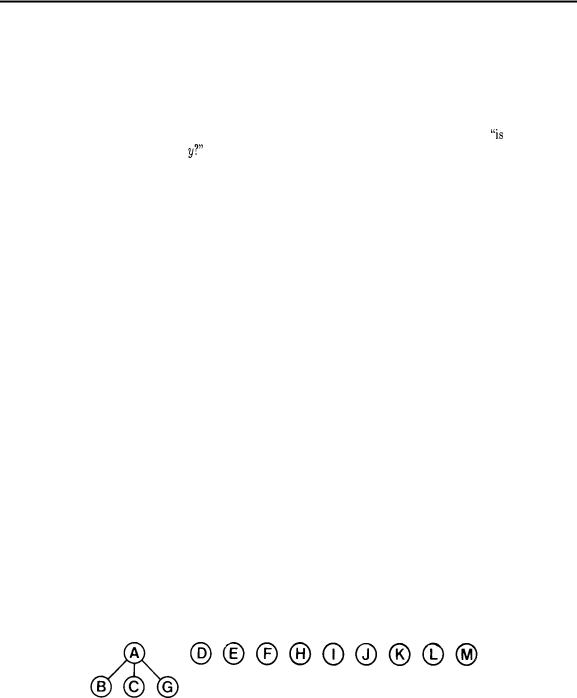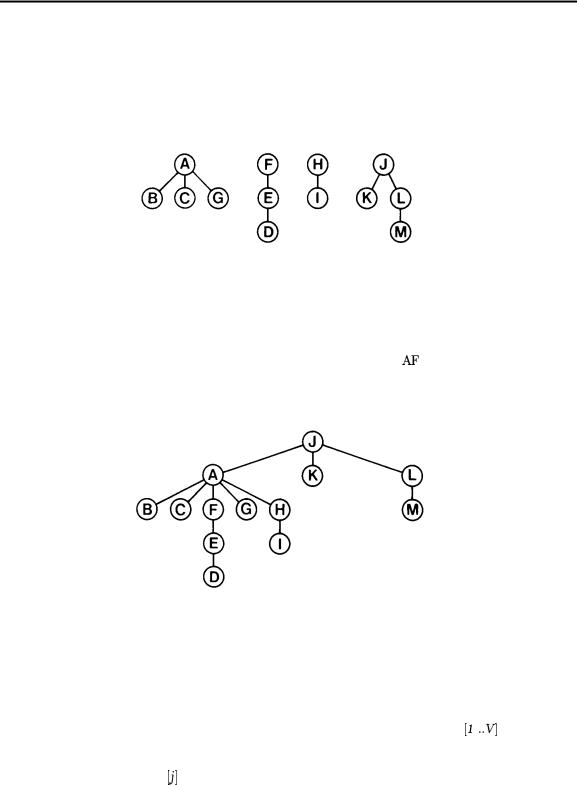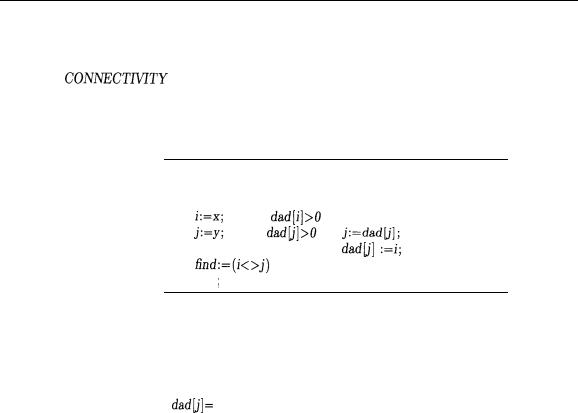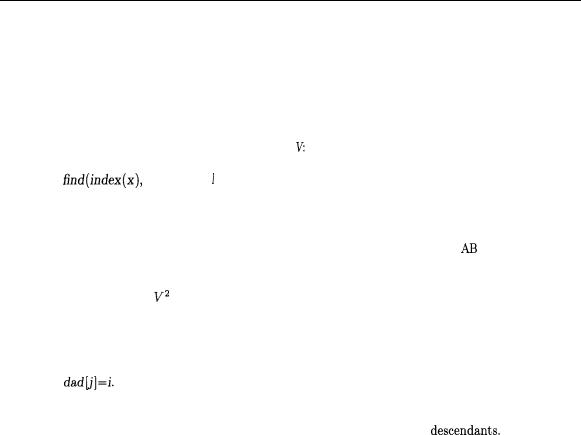
Algorithms [Sedgewick, Robert]
.pdf
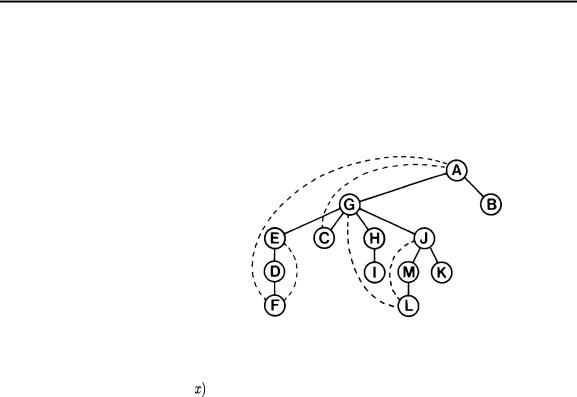

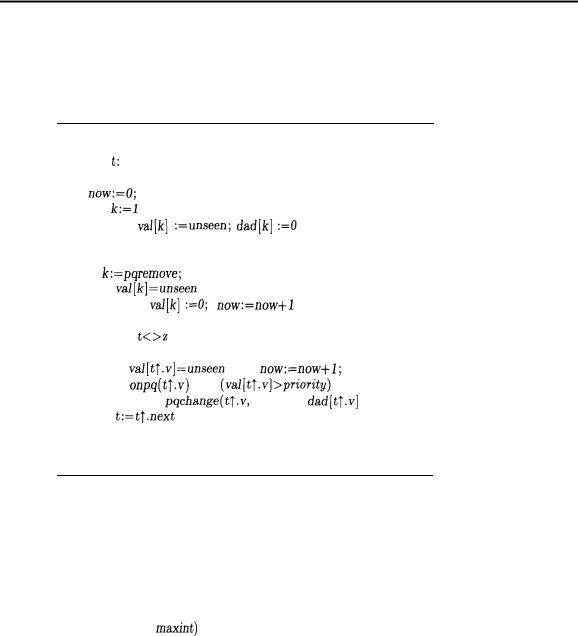

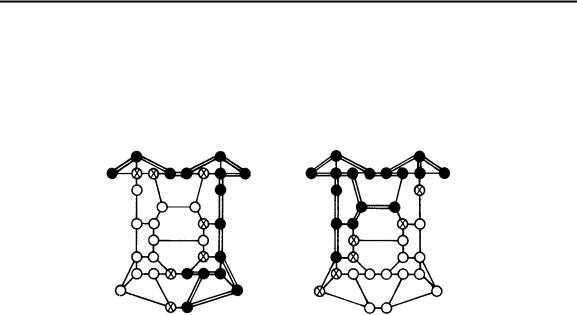
398 |
CHAPTER 30 |
Tree nodes are blackened in these diagrams, fringe nodes are crossed, and unseen nodes are blank. Depth-first search “explores” the graph by looking for new vertices far away from the start point, taking closer vertices only when dead ends are encountered; breadth-first search completely covers the area close to the starting point, moving farther away only when everything close has been looked at. Depth-first search is appropriate for one person looking for something in a maze because the “next place to look” is always close by; breadth-first search is more like a group of people looking for something by fanning out in all directions.
Beyond these operational differences, it is interesting to reflect on the fundamental differences in the implementations of these methods. Depth-first search is very simply expressed recursively (because its underlying data structure is a stack), and breadth-first search admits to a very simple nonrecursive implementation (because its underlying data structure is a queue). But we’ve seen that the true underlying data structure for graph algorithms is a priority queue, and this admits a wealth of interesting properties to consider. Again, we’ll see more examples in the next chapter.
Union-Find Algorithms
In some applications we wish to know simply whether a vertex x is connected to a vertex y in a graph; the actual path connecting them may not be relevant. This problem has been carefully studied in recent years; some efficient algorithms have been developed which are of independent interest because they can also be used for processing sets (collections of objects).
Graphs correspond to sets of objects in a natural way, with vertices corresponding to objects and edges have the meaning “is in the same set as.” Thus, the sample graph in the previous chapter corresponds to the sets {A B C D E F G}, {H I} and {J K L M}. Eac h connected component corresponds
